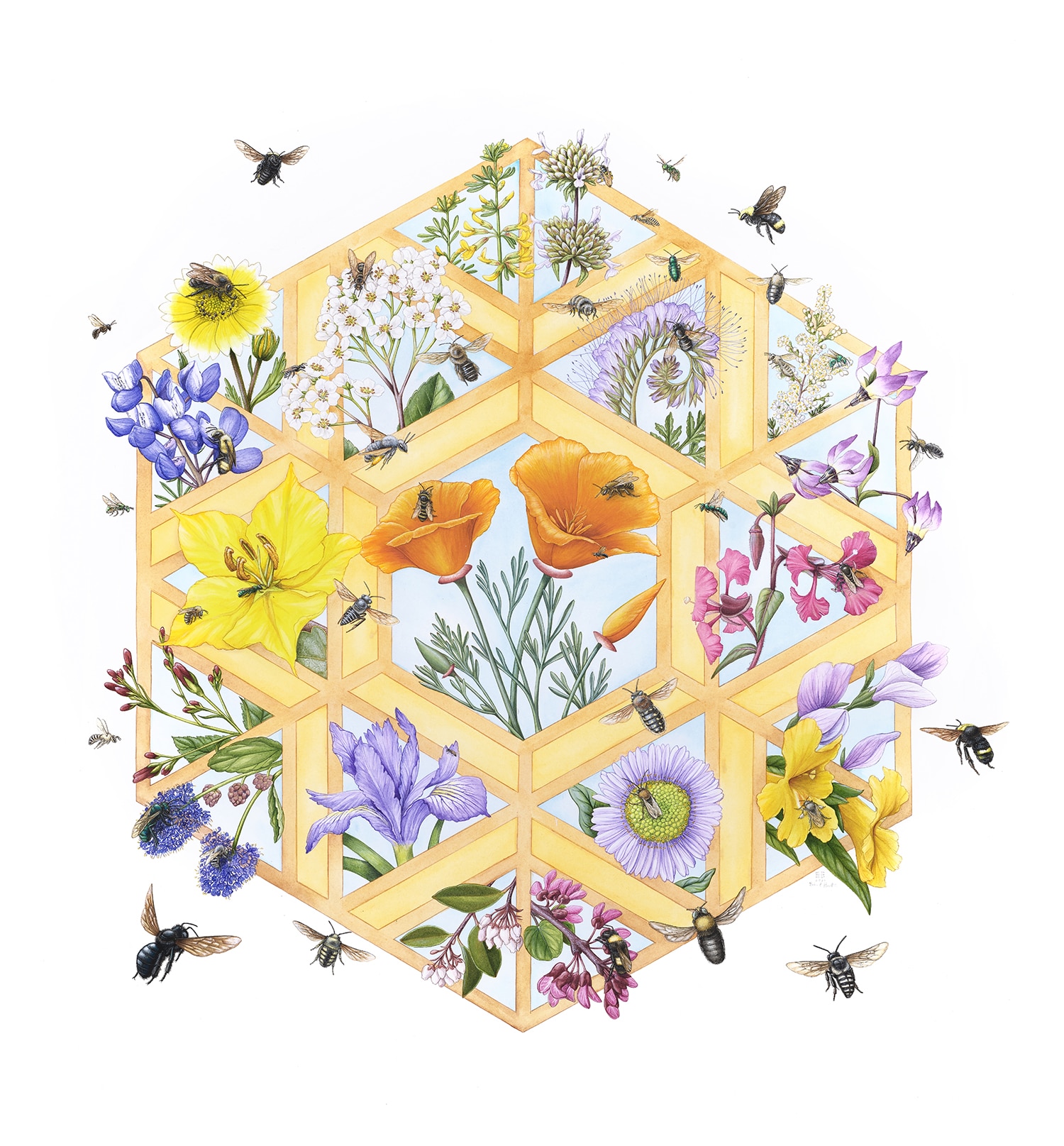In the two years I spent working on “Look Closer”, I thought a lot about mothering. Part of the reason it took me so long to complete the painting was my own mothering duties, when I had both my young children home full time during the pandemic and was still doing my regular illustration work (though I carried half my usual workload during that time). I carved out little bits of time here and there to paint, usually when my husband was home. Sometimes, though, I would put on a movie for the kids and race upstairs to paint as fast as I could. And while I was painting the bees in “Look Closer”, I would think about mothering—not as a human, but as a bee.
When I started thinking about a painting of California native bees, I bought The Bees in Your Backyard: A Guide to North America’s Bees by Joseph S. Wilson and Olivia Messinger Carril. In the dedication section, Carril writes:
As I wrote this book, I struggled through my first years as a mother, and I felt a connection to the female bees about whom I was writing, whose adult lives revolve completely around their offspring. For this reason I dedicate this book to all the mothers. And I dedicate this book to my husband and daughters, who opened the door to a true understanding of and appreciation for queen bees.
Reading this, it dawned on me that the native bees I was researching—most of them solitary—provide differently for their offspring than other insects do. Many of these bees excavate nests in soil, sand, or old wood; some, like the cellophane bee, protect the nest with waterproof lining that they make themselves. A female solitary bee then goes out and collects pollen to provision the nests (while feeding on nectar to fuel the flights back and forth). Once she’s mated, and a pollen ball (aka “bee bread”) has been deposited in the nest, the bee lays an egg in the nest so that the hatching larva will have a protein-dense meal to feed on and help it grow. Often, the female will seal up this part of the nest and create a new cell in which she leaves another pollen ball and egg, and so on. The female doesn’t live to see her offspring hatch, so she can’t shield them from predators, but hopefully the safety of the nest and the food supply gives each larva a chance to make it to adulthood.
This is such a contrast to the way that I’d thought about insects—that they play a numbers game, and just lay as many eggs as possible with the idea that some of them will survive weather and predation and lawnmowers and pesticides to make it to adulthood. I knew, of course, about ants and honeybees and their communal care for their young (and, interestingly, that the vast majority of individuals in a bee hive or ant colony are females, all related through their mother). But I assumed that the rest of the insects were just blindly laying eggs and hoping for the best. It was fascinating to learn the different strategies that the 1,600 species of native bees in California employ to give their offspring the best chance at survival. The bumblebees are social, creating underground nests, and some of the sweat bees will switch from solitary to social, depending on the conditions in a given year. But I couldn’t stop thinking about these solitary female bees, determinedly gathering pollen and setting up little hidden nurseries for their babies. In a time when I was home alone with my children, cut off from the rest of the world, I felt so connected to these mother bees.
Today is Mother’s Day, and because it’s a sunny spring day, bees are buzzing all around—a carpenter bee under the eaves out back, bumblebees on the poppies, honeybees on the neighbor’s rosemary. I watch them and think about the mother bees, going about their life’s work—and how it connects with my life’s work, too.


